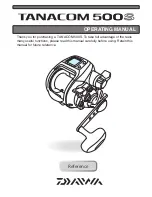
Form 824345
Page Number - 19
1) Apply 10” vacuum
(cold engine)
4) When engine is
warm (coolant
above 125°F)
2) Gauge will read 10”
3) Gauge will
read zero
2) Apply 10” vacuum
When engine is cold,
vacuum reading
should be zero
1) Warm engine
(above 125°F)
3) Gauge must read
source vacuum
RESULTS:
Vacuum when warm
Lower valve okay
No vacuum when warm
Replace PVS
Vacuum Gauge
4-PORT PVS TEST
UPPER VALVE FLOW
LOWER VALVE FLOW
RESULTS:
No vacuum when warm
Upper valve okay
Vacuum when warm
Replace PVS
THERMAL-CONTROLLED VACUUM-SWITCHING VALVES
3) If full vacuum flows through the valve when
heated, it is okay. If there is no vacuum flow or
there is vacuum flow when the coolant is cold,
replace the valve.
Follow this procedure to test the three-port
vacuum-switching valve:
1) Apply 10” Hg of vacuum with your vacuum
pump to the middle port of the valve with a vacuum
gauge at each of the other two ports.
2) Refer to the same color-coded valves and same
temperature specifications as for the two-port valve
above. If the vacuum switches at the specified
temperature, the valve is okay. If there is no
vacuum to the lower port above the specified
temperature, replace the valve.
The four-port valve must be tested two times, once
at the top two ports and once at the bottom two
ports as shown in the accompanying illustration
(FIGURE 15).
1) Apply 10” Hg of vacuum with your vacuum
pump to one of the top two ports. The valve should
hold vacuum when above the specified operating
temperature.
2) If flow occurs when the valve is warm, replace it.
3) For the lower two ports, vacuum must pass
through the valve only when the engine is warm;
otherwise, replace the valve.
FIGURE 15: TESTING THE FOUR-PORT PVS
Summary of Contents for MV8000
Page 73: ...Form 824345 Page Number 73 ...
Page 74: ...Page Number 74 Form 824345 ...
Page 75: ...Form 824345 Page Number 75 ...
Page 76: ...Page Number 76 Form 824345 ...
















































